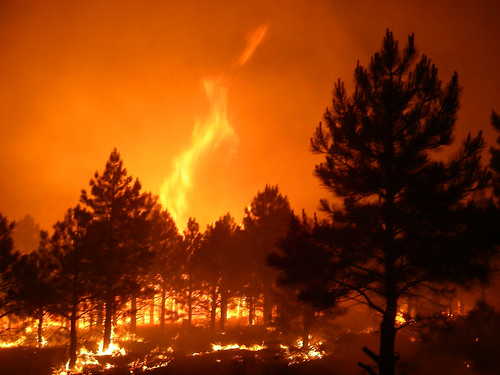
Forests significantly contribute to our quality of life, but climate change is adversely affecting natural resources in rural and urban areas across the U.S. A new report released by the White House, the National Climate Assessment, explores many related issues including how a warming planet affects our forests.
With contributions from U.S. Forest Service scientists, the report is one of the most comprehensive examinations of climate change and its effects on forested land. It concludes that a warming climate will complicate future management of public, private and tribal forests.
“Climate change is currently triggering multiple, sometimes contrasting, responses from our forests,” said Dave Cleaves, U.S. Forest Service Climate Change Advisor. “Longer growing seasons and gradually warming temperatures are helping trees grow faster in some areas, but in other areas, these longer and warmer growing seasons increase late summer moisture stress and reduce tree growth.”
The Forest Service integrates climate change awareness, mitigation and adaptation into the management of its 193 million acres through the Climate Change Performance Scorecard. For example, this tool has encouraged national forests to identify vulnerable water resources, plant more climate-resilient tree species, research carbon storage capacity and more.
Some of the other ways the Forest Service manages wildlands includes reducing the potential for large crown fires expected in a warmer climate by removing hazardous fuels and managing for lower stem densities in dry forests, managing forest genetic diversity to increase resilience to a warmer climate and restoring riparian areas adjacent to streams to ensure cold-water fish habitat during summer low-flow periods.
Public and private forests in the U.S. will increasingly be vulnerable to ecosystem changes and tree mortality through fire, insect infestations, drought and disease outbreaks. At the same time, the need for healthy forests will only continue to increase. Forests provide an expanding opportunity to support emerging bioenergy markets and carbon credit systems. It is likely such uses will interact with the demand for wood products, healthy watersheds and recreational opportunities. There will also be continued economic pressures encouraging a shift from forestland to agricultural or urban land uses.
According to Linda Joyce, a Forest Service scientist, and one of the authors of the report, climate-smart management practices are being developed and implemented, and the agency is maintaining its focus on retaining forests as forests restoring forest health and resilience, and reforesting private and federal lands.
However, Joyce emphasized that implementation of climate-smart management practices can be increased only through effective integration of scientific information in management of our national wildlands.
